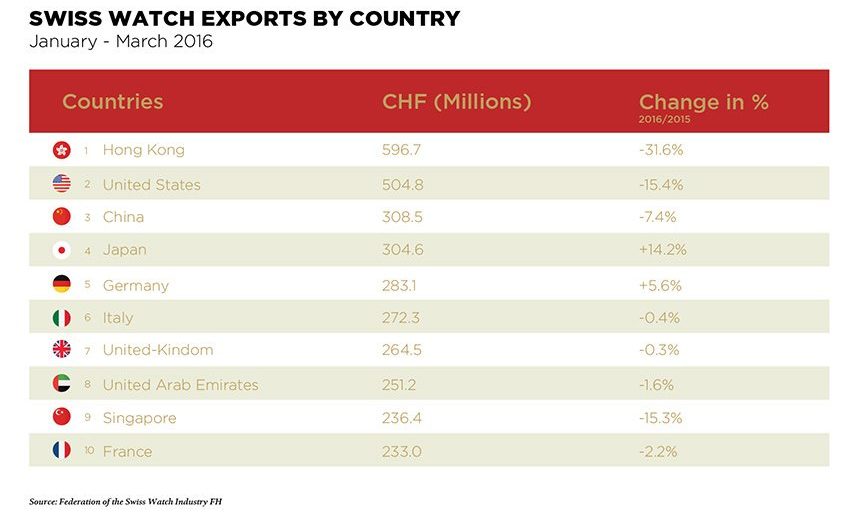
What Value Proposition?
As I’ve mentioned above, many watches with in-house-made movements saw increased prices incongruent with their actual value proposition in the market. It wasn’t a matter of how good the watches were, but rather if they were good enough given the market demand. The beauty of an industry of enthusiast watches with relatively few in-house movement-making companies was that they could supply the relatively niche base of collectors who want these products.

Today, there are so many in-house-made movements that they are no longer really exclusive and thus cannot demand as high a price premium. Again, remember that their true value is most often merely aesthetic and emotional. This is because any actual performance benefits over more “mass-produced” mechanical movements is irrelevant because the performance of both movements is eclipsed by modern technology elsewhere. Thus, it isn’t as though a mechanical watch with a $10,000 movement “beats” a watch with a $1,000 movement, because in terms of performance they are both beat by a $50 quartz watch. Therefore, the value of an in-house-made movement is a function of its actual exclusivity, emotional appeal, and aesthetic value. The question is who dictates this value? The brand’s shareholders or the market? Of course, the answer is always the market.

At first, it was difficult for a higher-priced watch industry to realize it was going to have a problem with willing consumers. In-house movements led to increased costs, which led to increased money flowing, which led to increased ego and images, which led to more marketing and distribution needs – read more about this in my article on Forbes. All of this attracted a swathe of mostly sales- (and not product-) focused leaders to the luxury watch industry, who often did not understand the limits of the market and the needs of a successful product. In new higher volumes, watches were being sold in large quantities (to support manufacturing costs) via wholesale to markets around the world.

What actually happened (and is still happening) is that more watches are being produced and sold into the market than were actually being purchased by the end consumer. Again, the watch makers profit when the watches are sold to distributors or retailers. Brands rarely make more money when the actual consumer purchases the product. That margin is for the retailer. Therefore, the primary interest of watch brands is to sell watches into market, and not to the end-consumer – that is seen as the responsibility of someone else.

For several years in a row, the watch industry has been producing more watches than can be sold to consumers. This has resulted in a steady build-up of unsold inventory. What happens to this inventory? Much of it enters what is known as the “gray market.” This is where an entity that originally purchased the watch from the brand sells it to an unauthorized third-party who is free to sell that watch at any price they like. This is often far below retail given the typically large profit margins of watches. I’ve discussed the current state and effects of the watch industry’s gray market on several occasions, most recently here.

Today, many watch brands are still relatively weak when it comes to fighting the gray market. Current tactics have been to attempt to dissuade consumers from buying via the gray market (warranty denial, etc.), or the more effective tactic of purchasing back unsold inventory. Still, when faced with losing money due to unsold inventory, more retailers or distributors have little choice but to sell what they feel are unsalable products “out the back door” to willing parties. The once discreet gray market caused relatively little harm before it made its discounted prices so public via the internet. The digital age made the sale of unsold new watch inventory a force to be reckoned with. It has become so pervasive that in many contexts the actual price that a watch can achieve is dictated by the gray market price.

What is interesting about the gray market is who it affects most. It might appear that it hurts the brand directly (because their products are being so regularly discounted), but it hurts their authorized dealers more directly. Watch brands make their money when their watches are sold via wholesale. By the time their products are sold via the gray market they have already made their money. Ignoring the gray market is clearly not a long-term solution, but it has been easier for brands versus retailers.

An upside to the popularity of the gray market is that it is proof that watch industry marketing efforts are succeeding. While consumers have been trained to expect discounted prices, consumers for luxury watches are still relatively plentiful. Thus, the watch industry is in a wonderful position today to transform the success of the gray market for watches online into a market for authorized new watches. My theory is that the major success of the internet watch gray market isn’t just discounted pricing, but convenience in purchasing and quality of service. That means if traditional authorized dealers are able to replace the gray market online it could result in success for both consumers and the watch industry.

Resetting The System
At this point, I have discussed why watch prices are higher than they were several years ago, why that was difficult to explain, how consumers have responded, and more or less what the watch marketing is likely to say as a result. I do not feel as though my discussion would be complete without some suggestions on what can be done about it. The watch industry has some very real production, marketing, sales, and distribution problems that cannot be easily overcome. Again, I direct most of the blame on the shift of many modern watch makers’ feelings to the need to produce in-house-made movements, and then setting in motion the investment and sacrifices to do so.

Some people have suggested that “resetting the system” is the answer. But what does that mean? You can’t just reduce prices with all these new industrial and investment costs. So what can you do? A simple answer is to slowly reduce cost redundancy by making a lot fewer in-house movements. This will mean moving back to how things used to be by sourcing movements, but it doesn’t have to be exactly the same as before.
In many ways, the suggestion to “reset the system” is more progressive than it is purely conservative. I think the real worry about this tactic is that people feel that “reset” means to ignore modern realities. This doesn’t have to be true. What it can mean is that the structure of how watch brands are organized can be reset. Far fewer watch brands need to make their own movements, and even fewer need to make movements for others.

Saving Jobs Through Manufacturing Diversification
One of the biggest worries the Swiss watch industry has is that by downsizing they need to fire people. Yes, that will need to happen, but already a lot of people have unfortunately lost their jobs. The last few years has not seen a larger watch industry, but rather a contracting one. As marketing and sales budgets shrink, more and more people are exiting the watch industry and new ones aren’t coming in. Again, that is despite strong consumer demand in healthy markets. This means that a good argument can be made that the industry will once again experience growth if prices go back down, meaning that large parts of the consumer public will no longer be priced out of high-quality watches. It wasn’t as though these consumers were ever without options, but rather than the options at the $1,000 – $3,000 range were typically not attractive enough.

Prices as well as production volumes need to decrease to sustainable levels. The only way to do that is either to remove production capacity, meet production capacity, or re-purpose production capacity. One way to meet production capacity is to decrease prices. I have a good feeling that if most brands that make high-quality in-house movements lowered prices to those the market could bear, they would appreciably increase sales volume. With that said, this option is likely only available to a select number of brands.

Most brands will need to entirely remove or vastly reduce production capacity by eliminating production jobs. Not producing their own movements will necessitate buying them from elsewhere – but many of them still have all the tooling and designs. Thus, a good option is for brands to support the creation of a few Swiss “mini ETA-style companies.” These would be third-party specialists who make movements for brands. Some of these companies might even be set up to produce unique movements for each brand, but control costs because they use the same machines and personnel. What does this look like?

Well, assume brand A, B, and C all create their own distinct movements so that they can best differentiate their products on the market. They each more or less employ the same types of workers and use mostly the same machines to perform the work. Right now, all of these brands make their own movements in-house and are producing more watches than the market can bear. So think about if one company made movements for A, B, and C brands. They could split production capacity between the three brands and thus increase efficiency and reduce costs. Brands still get their own movements, but can charge less. In reality, such a system could be set up to offer wide arrays of movement customization so that brands could purchase movements from a third-party supplier – but based on what they can earn per sale, they could order increasingly distinctive movements from an aesthetic or complication perspective. This is one possible alternative for watch brands who today enjoy the ability to have distinctive movements but must reduce costs and prices by eliminating the cost of producing movements in-house.

An additional tactic for how to handle in-house production costs is to diversify production. Some watch brands already do this, using unused production capacity to produce parts for other brands (typically in secret). Why stop there? Why not use the talent and machinery necessary to produce high-quality precision parts for other purposes. For example, I’ve felt for a long time now that the Swiss watch industry’s production talent would be an obvious candidate to help produce high-quality components for robotics hardware makers. Watch brands with impressive manufacturing strength might even make their brands more appealing by producing both traditional mechanical watches and also high-tech mechanical robotics.

Next, Focus On Digital Sales & Global Distribution
The unanswered question to helping the watch industry return to stability is how to best handle the internet. In addition to information transparency, the real effect of the internet on the watch industry was to “flatten” distribution. Once strict regional territories became almost meaningless when the internet allowed retailers to connect with consumers across the globe. Watch retail went from being a guild to, in some instances, a war. Spurred by price competition, regional competition made the act of selling a watch even more difficult. The current mix of marketing realities and watch brand policies toward sales and distribution is often at odds.

I firmly believe that the first step is to reduce prices and inventory (as I recently discussed at Forbes here). Watch retailers have always been the most well-situated to understand their consumers, and brands need to once again listen to them in regard to what they can charge for their watches. The irony of the current situation should be noted. Here we have luxury retailers interested in profit and revenue maximization, complaining that prices are too high. By listening to quality retailers, the watch production side of the industry will have the best advice it can get on what to price products, and how much product to produce.

The last step is in both encouraging a diverse set of retailers while also ensuring fairness. One option I’ve mentioned in the past is for watch brands to vertically integrate to the extent that they both produce and sell goods. This can work for some brands, but most will still need to focus on either production or selling. This means that a robust network of strong retail partners will be essential for continued success of the watch industry. Many brands tried and failed at “owning” the entire process of production to consumer sales, and probably need to give up. The likely culprit is the mere fact that only the most effectively organized companies can excel at design, manufacturing, distribution, sales, and customer service all the same time.

Let me quickly recap on this larger discussion because it made many turns. My basic premise is that the pursuit and reality of producing in-house mechanical movements set in motion a series of events that likely led to the complex set of difficult-to-solve problems the luxury watch industry currently faces. It therefore might be advisable to reduce production of in-house movements and take the industry in a new direction as a means of solving a major part of why both prices and production volumes for high-end watches are at currently unsustainable and already damaging levels.

